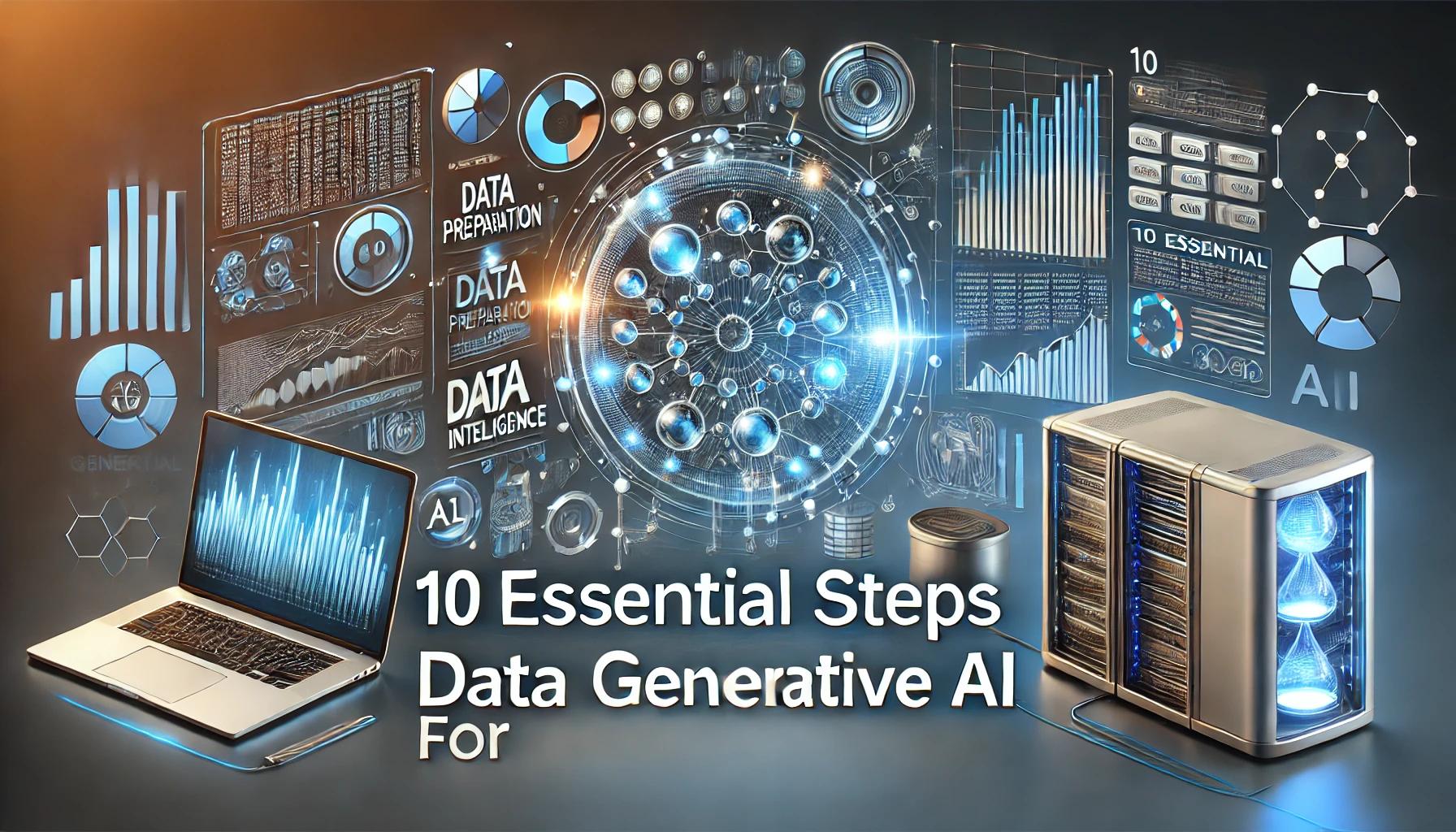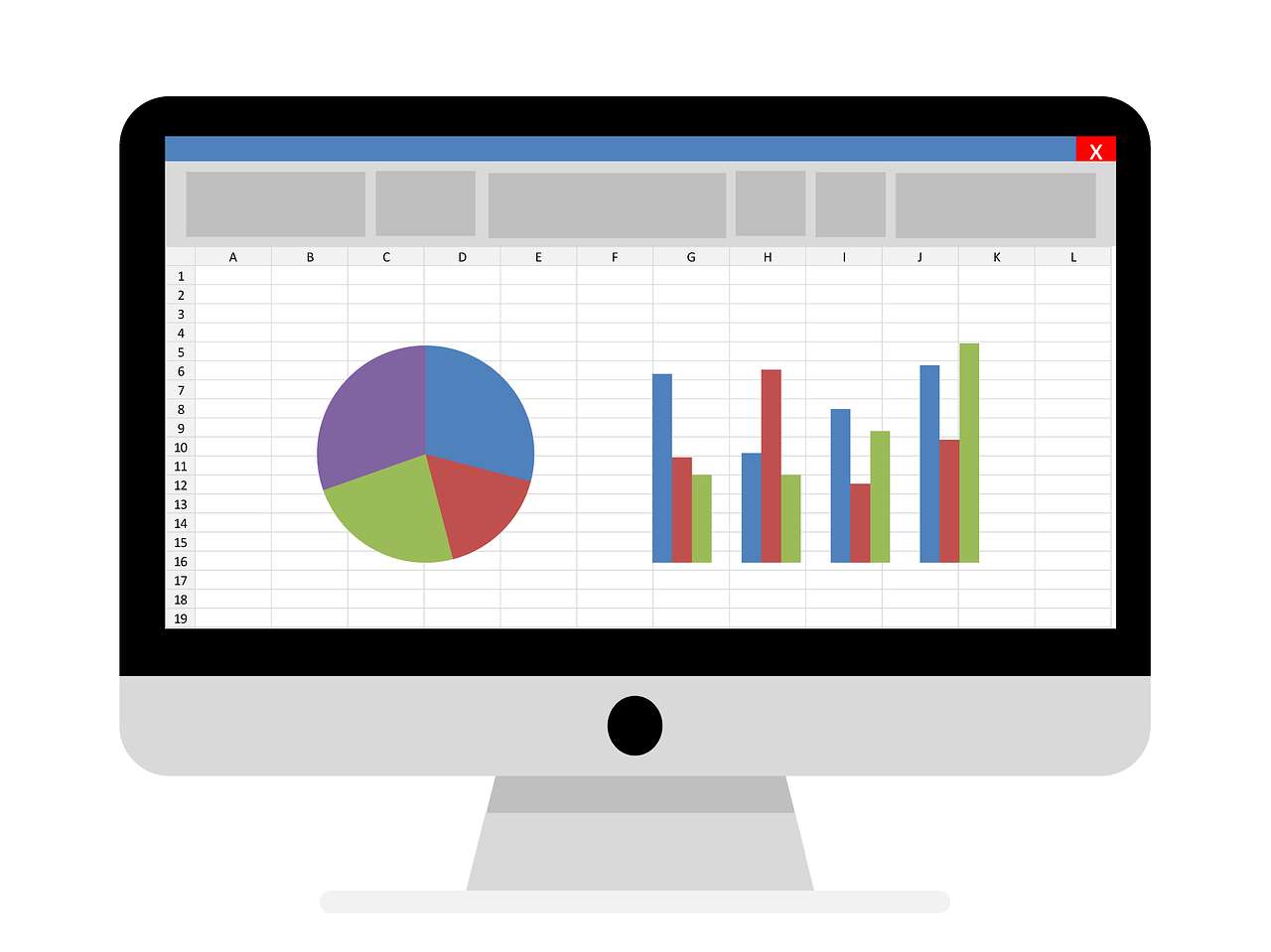Chapters
10 Essential Steps in Data Preparation for Generative AI

Overview
Introduction
Data preparation is a critical process in the development and implementation of generative AI models. Without a robust data preparation pipeline, even the most advanced algorithms can fall short, leading to suboptimal performance and inaccurate results. This article delves into the 10 key steps in data preparation for generative AI, providing insights and best practices to ensure your AI models are well-equipped to generate high-quality outputs.
1. Understanding the Importance of Data Preparation for Generative AI
Before diving into the technicalities, it’s crucial to understand why data preparation for generative AI is so vital. Generative AI relies on vast amounts of data to learn patterns, generate new content, and perform tasks like image creation, text generation, and more. However, the quality of the data directly influences the effectiveness of the AI model. Poor data can lead to biased outputs, inaccuracies, and even ethical issues.
2. Data Collection: The Foundation of Data Preparation for Generative AI
The first step in the data preparation process is data collection. This involves gathering raw data from various sources, including databases, sensors, web scraping, and user-generated content. It is essential to ensure that the data is relevant, diverse, and comprehensive to provide a strong foundation for training your generative AI models.
3. Data Cleaning: Removing Noise for Better Performance
Once the data is collected, the next step is data cleaning. Data cleaning involves removing noise, outliers, and any irrelevant or duplicate entries. This step is crucial because noisy data can mislead the AI model, resulting in poor performance. Techniques like filtering, normalization, and deduplication are often used during this phase to ensure the dataset is clean and reliable.
4. Data Transformation: Structuring Data for AI Models
After cleaning, the data needs to be transformed into a format suitable for the generative AI model. Data transformation involves converting raw data into structured formats, such as tables or matrices, that can be easily processed by AI algorithms. This step may also include feature engineering, where new features are derived from the existing data to enhance the model’s predictive power.
5. Data Annotation: Adding Context to Raw Data
Data annotation is a crucial step in preparing data for supervised generative AI models. This involves labeling data with tags or annotations that provide context and meaning. For example, in image generation tasks, images might be labeled with objects, colors, or other features. Annotated data helps the AI model understand and learn from the data more effectively.
6. Data Augmentation: Expanding the Dataset
Data augmentation is a technique used to artificially expand the size of the training dataset by creating modified versions of existing data. This can include rotating images, altering text, or adding noise. Data augmentation is particularly useful in generative AI as it helps prevent overfitting and improves the model’s ability to generalize to new data.
7. Data Splitting: Training, Validation, and Testing
Before training a generative AI model, the dataset must be split into three subsets: training, validation, and testing. The training set is used to train the model, the validation set is used to tune hyperparameters, and the testing set is used to evaluate the model’s performance. Proper data splitting is essential to ensure that the model can perform well on unseen data.
8. Data Balancing: Ensuring Fair Representation
In many cases, datasets can be imbalanced, meaning that some classes or categories are overrepresented while others are underrepresented. Data balancing techniques, such as oversampling, undersampling, or synthetic data generation, are used to ensure that all classes are fairly represented. This is particularly important in generative AI to avoid biased outputs.
9. Data Normalization: Bringing Consistency to the Dataset
Data normalization is the process of scaling the data to a consistent range, usually between 0 and 1. This step is crucial for generative AI models that rely on numerical data, as it ensures that all features contribute equally to the model’s learning process. Without normalization, features with larger values could dominate the training process, leading to skewed results.
10. Model Evaluation: Assessing the Effectiveness of Data Preparation
The final step in data preparation for generative AI is model evaluation. After training the model, it’s essential to assess its performance using the testing set. Metrics such as accuracy, precision, recall, and F1-score are commonly used to evaluate the model. Additionally, it’s important to review the outputs generated by the model to ensure they meet the desired quality and ethical standards.
Conclusion
Data preparation for generative AI is a multi-step process that plays a crucial role in the success of AI models. By following the 10 key steps outlined in this article, you can ensure that your generative AI models are built on a solid foundation of clean, structured, and well-prepared data. Investing time and effort into data preparation not only enhances the performance of your AI models but also mitigates risks associated with biased or inaccurate outputs. As generative AI continues to evolve, mastering the art of data preparation will remain a key factor in driving innovation and achieving reliable results.
10 Frequently Asked Questions (FAQs)
-
What is data preparation for generative AI? Data preparation for generative AI involves collecting, cleaning, transforming, and structuring data to ensure it is suitable for training AI models.
-
Why is data preparation important for generative AI? Proper data preparation ensures that AI models are trained on high-quality data, leading to more accurate and reliable outputs.
-
What are the main steps in data preparation for generative AI? The main steps include data collection, cleaning, transformation, annotation, augmentation, splitting, balancing, normalization, and model evaluation.
-
How does data cleaning impact generative AI models? Data cleaning removes noise and irrelevant information, improving the model’s ability to learn patterns and generate accurate outputs.
-
What is data augmentation, and why is it used? Data augmentation expands the dataset by creating modified versions of existing data, helping to prevent overfitting and improve model generalization.
-
Why is data splitting necessary in generative AI? Data splitting ensures that the model is trained, validated, and tested on different subsets of data, preventing overfitting and improving performance on unseen data.
-
What is the role of data annotation in generative AI? Data annotation provides context and meaning to raw data, helping supervised generative AI models learn more effectively.
-
How does data normalization affect AI model training? Data normalization scales features to a consistent range, ensuring that all features contribute equally to the model’s learning process.
-
What are common techniques for balancing data in generative AI? Common techniques include oversampling, undersampling, and synthetic data generation to ensure fair representation of all classes in the dataset.
-
How do you evaluate the effectiveness of data preparation for generative AI? Model evaluation using metrics like accuracy, precision, recall, and reviewing the generated outputs helps assess the effectiveness of data preparation.
This article should provide a comprehensive introduction to data preparation for generative AI, catering to both beginners and those looking to refine their processes.
Start TutorialTutorials are for educational purposes only, with no guarantees of comprehensiveness or error-free content; TuteeHUB disclaims liability for outcomes from reliance on the materials, recommending verification with official sources for critical applications.
Similar Tutorials

Advanced Excel Charts Tutorial: How to Create Prof...
Learn how to create professional charts in Excel with our advanced Excel charts tutorial. We'll show...

Advanced Excel Functions: Tips and Tricks for Boos...
Are you tired of spending hours working on Excel spreadsheets, only to find yourself stuck on a prob...

Apache Flume Tutorial: An Introduction to Log Coll...
Apache Flume is a powerful tool for collecting, aggregating, and moving large amounts of log data fr...
Explore Other Libraries
Please allow ads on our site
Kindly log in to use this feature. We’ll take you to the login page automatically.
Login
Join Our Community Today
Ready to take your education and career to the next level? Register today and join our growing community of learners and professionals.

Your experience on this site will be improved by allowing cookies. Read Cookie Policy
Your experience on this site will be improved by allowing cookies. Read Cookie Policy


Comments(0)